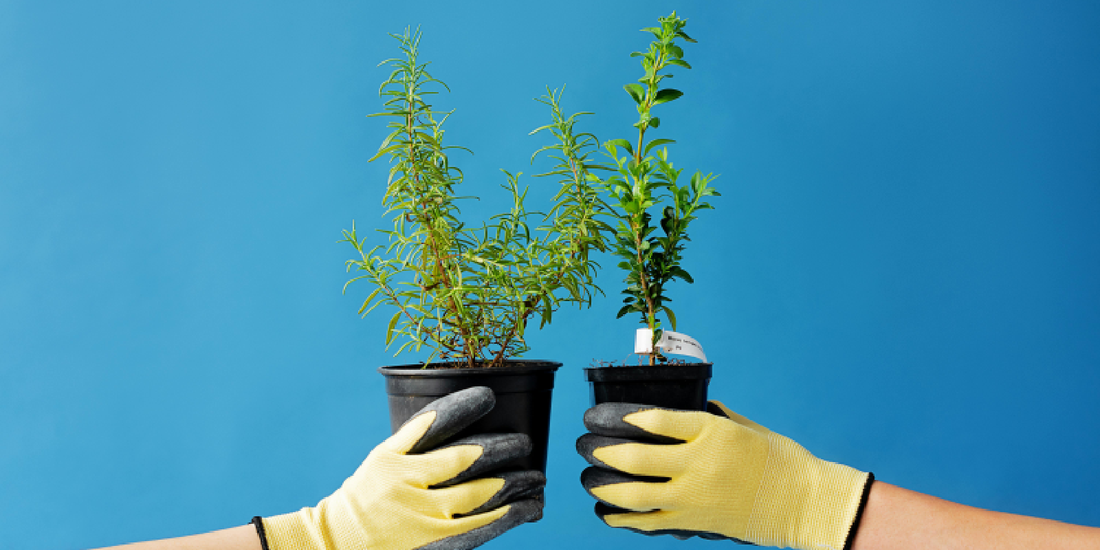
How to Grow Basil Indoors Under Light
Share
Basil is one of the most beloved herbs in the kitchen. Its fragrant leaves elevate everything from pasta sauces to salads, pestos, soups, and even cocktails. While many gardeners grow basil outdoors during the summer, you don’t have to wait for warm weather or sunshine to enjoy fresh leaves. With the right indoor setup, basil thrives year-round under grow lights.
In this comprehensive guide, we’ll cover everything you need to know about growing basil indoors under artificial light—covering the science of light, temperature, watering, and plant care, as well as practical tips for harvesting and keeping your basil healthy for months. Whether you’re a beginner or an indoor gardening enthusiast, you’ll walk away with a clear plan for keeping this aromatic herb thriving inside your home.
Why Grow Basil Indoors?
Basil is a warm-season plant that struggles in cool conditions. Outdoor basil often wilts in early autumn or suffers from pests and inconsistent rainfall. Indoors, you gain full control over its growing environment:
- Year-round harvests – No need to wait for summer.
- Pest control – Indoor setups minimize exposure to aphids, beetles, and fungal issues.
- Convenience – Fresh basil is always just a few steps away from your kitchen counter.
- Consistency – Under proper grow lights, basil receives stable light intensity every day.
This is where a modern plant stand with integrated grow lights, like the VerdantGlow S-Shaped 8-Tier Plant Shelf with Grow Lights by amoyls, comes in. It combines elegant design with full-spectrum lighting, ensuring your basil receives the intensity and spectrum it needs to thrive indoors.
Choosing the Right Basil Variety
Basil isn’t just one plant—it comes in many varieties, each with unique flavors and growth habits. Here are some excellent choices for indoor growing:
- Genovese Basil – Classic Italian basil with large, aromatic leaves. Perfect for pesto.
- Sweet Basil – Mild flavor, commonly used in Mediterranean cuisine.
- Thai Basil – Spicy, anise-like flavor, ideal for Asian dishes.
- Lemon Basil – Adds citrus notes to seafood and salads.
- Purple Basil – Striking color with a slightly spicier taste.
For beginners, Genovese or Sweet Basil are highly recommended because of their forgiving growth habits and versatile culinary use.
Understanding Basil’s Light Needs
Plants need light for photosynthesis, and basil is no exception. Outdoors, basil loves full sun—around 6–8 hours per day. Indoors, grow lights replace natural sunlight, but not all lights are equal.
Spectrum
- Basil benefits from full-spectrum grow lights that mimic natural sunlight.
- Blue light encourages strong, leafy growth.
- Red light promotes branching and flower development (though for basil, you want to delay flowering).
Duration
- Basil requires 14–16 hours of light daily under artificial lights.
- Use a timer to keep light cycles consistent.
Distance
- Place lights about 6–12 inches above the basil leaves.
- Adjust as plants grow taller to prevent burning or stretching.
The VerdantGlow S-Shaped 8-Tier Plant Shelf with Grow Lights is designed with adjustable, full-spectrum LEDs, making it simple to maintain optimal distance and coverage for your basil at every growth stage.
Planting Basil Indoors
Seeds vs. Transplants
- Seeds are inexpensive and let you start multiple plants. Basil seeds sprout in 5–10 days.
- Transplants (small starter plants) save time if you want quicker harvests.
Soil
- Use a well-draining potting mix enriched with organic matter. Avoid garden soil, which compacts easily indoors.
- Basil thrives in soil with a pH of 6.0–7.5.
Containers
- Choose containers with drainage holes.
- A pot size of 6–8 inches deep works well for basil’s roots.
Spacing
- If growing multiple basil plants, allow 6–8 inches of space between each to prevent crowding.
Watering and Humidity
Basil likes moisture but hates soggy roots. Proper watering is crucial.
- Water when the top inch of soil feels dry. Stick your finger into the soil to test.
- Use room-temperature water and water at the base, not on leaves.
- Ensure pots have drainage trays to catch excess water.
- Basil prefers 40–60% humidity. If your indoor air is dry, consider a humidity tray or small humidifier.
Fertilizing Basil Indoors
Since indoor basil isn’t exposed to natural soil nutrients, fertilizing is essential.
- Use a balanced, water-soluble fertilizer every 2–4 weeks.
- Dilute fertilizer to half-strength for seedlings.
- Once established, feed basil every 2 weeks for strong growth.
- Organic options like fish emulsion or seaweed extract are excellent choices.
Pruning and Harvesting Basil
Basil rewards pruning with bushier, healthier growth.
Pruning Tips
- Start pruning once plants reach 6–8 inches tall.
- Pinch off the top leaves just above a pair of lower leaves.
- Avoid cutting more than one-third of the plant at once.
Harvesting
- Harvest regularly to encourage branching.
- Always remove flower buds when they appear—this keeps the plant producing leaves instead of shifting energy to seed production.
- Freshly harvested basil should be used immediately for maximum flavor, though you can also dry or freeze it.
Preventing Common Problems
Even indoors, basil can face some challenges.
- Leggy growth – Caused by insufficient light. Raise intensity or adjust distance.
- Yellow leaves – Usually a sign of overwatering or poor drainage.
- Pests – Occasionally, spider mites or aphids appear. Treat with neem oil spray if needed.
- Bolting (flowering early) – Caused by heat stress or neglecting pruning. Keep temperatures steady (65–75°F) and prune regularly.
Integrating Basil with Your Indoor Garden
One advantage of using a tiered stand like the amoyls VerdantGlow S-Shaped 8-Tier Plant Shelf with Grow Lights is the ability to grow basil alongside other herbs and plants. Basil pairs beautifully with:
- Parsley – Similar light and water requirements.
- Mint – Keep it in a separate pot, as mint spreads aggressively.
- Chives – Easy to grow and a great kitchen companion.
- Leafy greens (lettuce, spinach) – Quick harvest cycles complement basil’s longer growth.
By mixing basil with other herbs, you create a compact indoor garden that enhances both culinary options and interior aesthetics.
Long-Term Care and Regrowth
- Basil plants typically last 3–6 months indoors before becoming woody.
- To extend harvests, sow new basil seeds every 6–8 weeks. This ensures a continuous supply of young, vigorous plants.
- Rotate pots around your shelf to ensure even light distribution.
Styling and Aesthetic Benefits
Aside from its culinary uses, basil plants contribute to the beauty of your home. Their lush green leaves add vibrancy to kitchens, living rooms, or home offices. On a sleek plant shelf like the VerdantGlow, basil becomes both a functional herb and a decorative feature.
Conclusion: Fresh Basil All Year Long
Growing basil indoors under light is both rewarding and practical. With the right setup—quality soil, consistent watering, proper pruning, and especially full-spectrum grow lights—you can enjoy fragrant leaves anytime. The amoyls VerdantGlow S-Shaped 8-Tier Plant Shelf with Grow Lights makes the process seamless, combining elegance with function so that your indoor herb garden thrives while complementing your living space.
If you’ve ever wished for fresh basil in the middle of winter, this is your solution. Start small, prune often, and let your indoor basil garden bring freshness to every meal you prepare.
